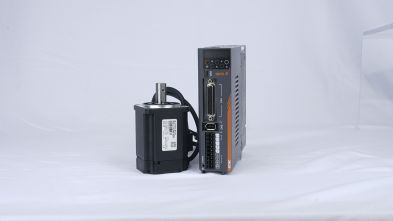4 points you should know about servo motors
2022-12-22 17:03:14
If you are new to servo motors, this article will help you understand the knowledge of servo motors. If you already know about servo motors, this article will give you a more comprehensive understanding of them. This article mainly focuses on what is a servo motor, its structure, working principle, and how to control it to introduce the servo motor.
What is a servo motor?
A Servo motor refers to an engine that controls the operation of mechanical components in a servo system. It is an auxiliary motor indirect speed change device and a motor that can rotate with high precision. Typically this type of motor consists of a control circuit that provides feedback on the current position of the motor shaft, which enables the servo motor to rotate with high precision. Servo motors are used if you want to rotate an object at a specific angle or distance. It just consists of a simple motor that runs through a servo. If the motor is powered by a DC power supply, it is called a DC servo motor, and if it is an AC motor, it is called an AC servo motor. Apart from these main classifications, there are many other types of servo motors depending on the type of gear arrangement and operating characteristics. Servo motors usually have gearing that allows us to get very high torque in a small and lightweight package. Due to these properties, they are used in many applications such as toy cars, RC helicopters, airplanes, robotics, etc.

Structure
The servo motor usually has a precise position detection element such as a photoelectric encoder or a resolver as a feedback element for position or speed. The servo motor device consists of the following three components:
- An "instructing device" (controller, Controller) that issues an action command.
- The "control device" (servo amplifier) that makes the motor act according to the instruction signal and feedback signal of the instruction device.
- The power from the servo amplifier is supplied to the "driving and sensing device" that drives the control object and detects its state.
In the servo system, the amount of error between the control result and the target value can be reduced. The signal from the control object is returned to the servo amplifier and reflected in the control, and the motor rotation is sensed by the encoder (Encoder) and feedback. It is widely used because of its simplicity and convenience. In contrast, sensors such as linear encoders can be added to the controlled machine, but this is mostly used in industries that require high-precision control.
Principle
The servo system is an automatic control system that enables the output-controlled quantities such as the position, orientation, and state of the object to follow any changes in the input target (or given value). The servo is mainly positioned by pulses. In simple terms, when the servo motor receives 1 pulse, it will rotate the angle corresponding to 1 pulse, thereby realizing displacement. Because the servo motor itself has the function of sending pulses, so the servo motor rotates one Angle, the corresponding number of pulses will be sent out, which echoes the pulses received by the servo motor, or is called a closed loop. In this way, the system will know how many pulses are sent to the servo motor and how many pulses are received at the same time. It precisely controls the rotation of the motor to achieve precise positioning, which can reach 0.001mm.
How to control it?
This article mainly introduces three methods to control the servo motor.
- Torque control: The torque control method is to set the external output torque of the motor shaft through the input of external analog quantity or the assignment of direct address.
- Position control: In the position control mode, the rotation speed is generally determined by the frequency of externally input pulses, and the rotation angle is determined by the number of pulses. Some servos can directly assign speed and displacement through communication.
- Speed mode: The rotation speed can be controlled by analog input or pulse frequency. The speed mode can also perform positioning when there is an outer loop PID control of the upper control device, but the position signal of the motor or the direct load must be used. The position signal is fed back to the upper position for operation. The position mode also supports the direct load outer loop to detect the position signal. At this time, the encoder at the motor shaft end only detects the motor speed, and the position signal is provided by the direct final load end detection device. The advantage of this is that it can reduce the intermediate transmission process. The error increases the positioning accuracy of the entire system.
Conclusion
Servo motors occupy an important position in the composition of automation equipment, and are widely used in machinery, medical, printing, food and other industries. The above is the introduction of servo motors. If you have any unclear points, please feel free to come to our website for a consultation.
See What Lunyee Can Do For You
Contact Us
- 8619149417743
- +86-0371-5562 0274
- [email protected]
- Zhengzhou, Henan Province, China
- Mon-Fri: 9:00 - 18:00




